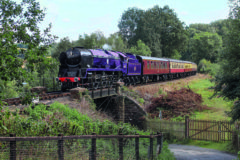1948 Fordson 7V lorry restored
Posted by Chris Graham on 1st April 2022
This 1948 Fordson 7V lorry really was restored from a pile of bits. Peter Simpson recounts the story and admires a job well done.
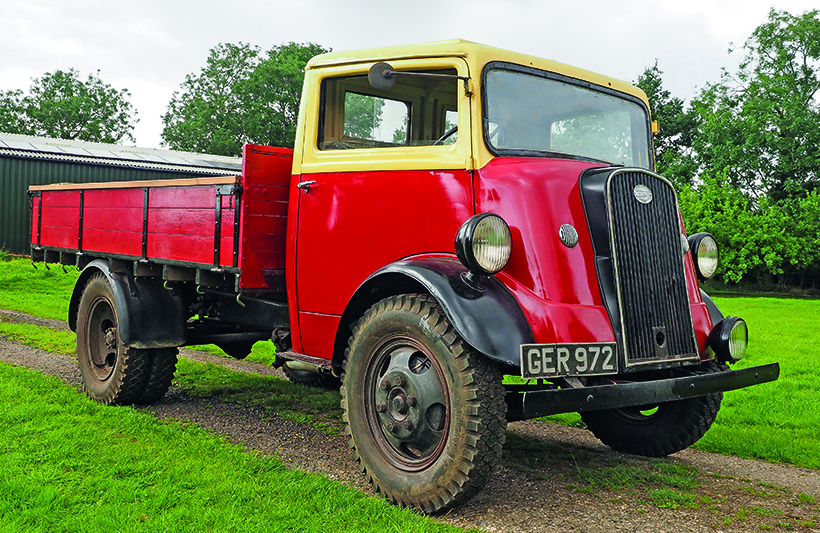
Neal and Nigel Davis’ 1948 Fordson 7V lorry – beautifully restored.
Over the past few months, CVC has featured a few recent projects completed by Norfolk-based duo Neal and Nigel Davis. As we’ve seen, the Davis brothers have a definite tendency to take on stuff that’s a bit unusual or a bit ambitious. Or, as we saw back in December with Neal’s Allen-Grove H2564 self-propelled mobile crane, extremely unusual AND extremely ambitious!
Anyway, to round up this short series – for now, anyway – we come to Nigel’s 1948 Fordson 7V. This was acquired as, quite literally, a pile of bits. It has, though, been finished to the standard seen here in not much more than a year, which is impressive, especially considering that the aforementioned crane was also underway during part of that time. Neal and Nigel certainly like to keep busy.
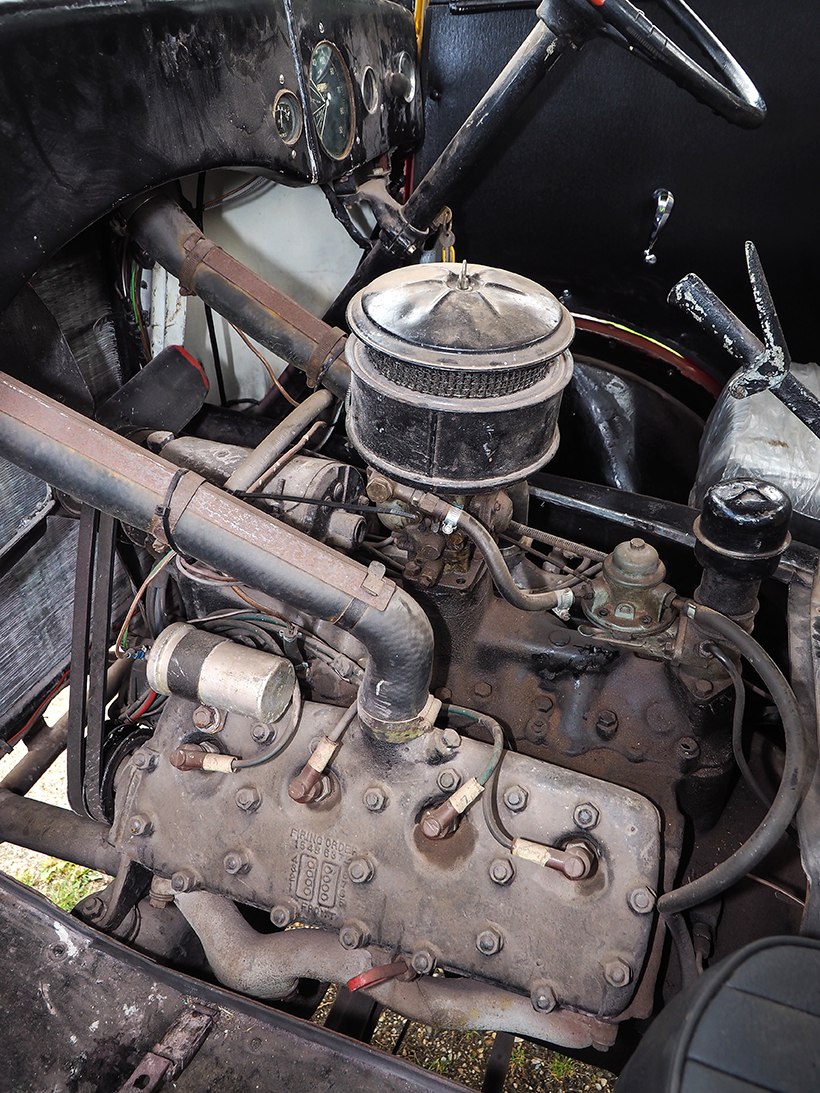
‘Flathead’ V8 engine was used extensively by Ford in Europe and America, and is highly sought-after in customising circles.
Abandoned project
Like so many good projects, the Fordson came into Nigel’s possession through a ‘contact.’ In this case the guilty party was Gary Woodrow, who organises the commercial and military section at the Eastern Counties Vintage Show (see this month’s news pages for details of the new date for this year’s show). This is Neal and Nigel’s main local show, and unsurprisingly, the brothers are regular exhibitors.
Anyway, knowing of their varied and eclectic vehicle tastes, and their willingness to take on projects which others considered too far gone, Gary told them about a Fordson 7V which one of his tractor-owning friends was looking to pass on. The 7V had, apparently, been on a farm for many years and after many years of trying, the owner had managed to persuade the farmer to sell it.
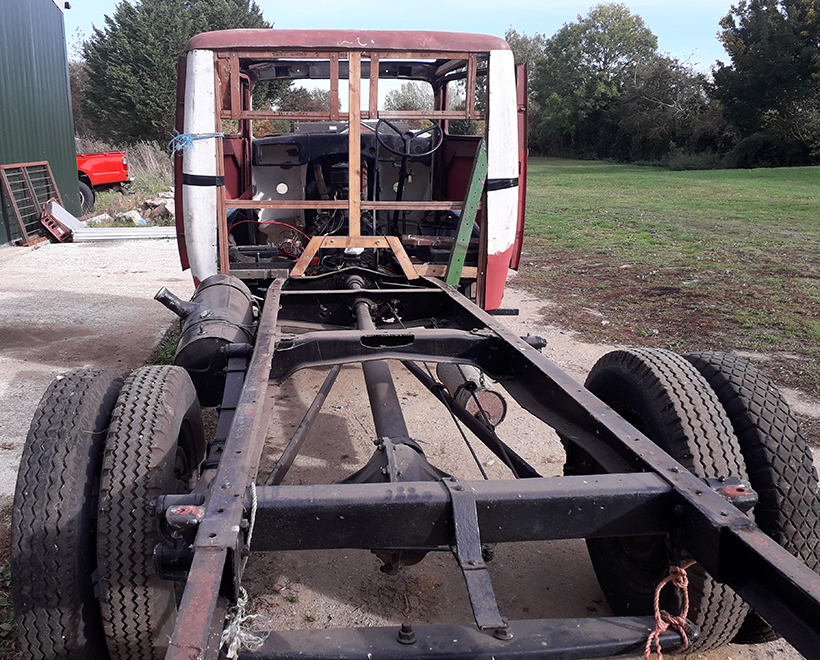
Simple chassis, and in relatively good condition overall.
The Fordson was destined to be used for transporting tractors to shows, and a fair amount of work had been completed to that end. This included a mechanical overhaul, putting the chassis into half-decent condition, and replacing the tipper with a newly-constructed flat body. This was actually about 2ft longer than the chassis, so that a particular tractor would fit on.
Attention then turned to the wooden-framed cab which had been cut into three pieces, so it could be fitted into his van and taken for the metal panelwork to be blasted. Once this was completed however, the owner realised that making the new cab frame was beyond his abilities. After sitting in his yard for a while, the part-finished and still-dismantled project was, reluctantly, offered for sale.

Cab build-up underway. Bottom half of windscreen surround has been renewed.
Unfortunately, however, the only real interest came from people who wanted it only the flathead Ford V8 engine; these are sought-after in customising circles. There was, though, a strong desire for the 7V to be restored in its own right. Therefore, Neal and Nigel were given a rather generous offer; “if you are going to restore the lorry, you can have it, no strings.” The offer was, of course, accepted – and the previous owner even delivered the chassis plus everything that was still attached. The rest was collected in the back of Nigel’s pick-up truck.
Help from the middy
Like the previous owner, Neal and Nigel had little experience of making wooden lorry cab frames, but they knew some people who did, and that was the coach building and restoration volunteers at the Mid-Suffolk Light Railway. As we saw a couple of months ago, Neal and Nigel are part of the team at the ‘Middy’ and had recently done the bulk of the work on restoring the railway’s Dennis 4-tonner.
Thus they were able to arrange for the coach restorers there (“Julian and his mates”) to build a complete new cab frame. This was, of course, a background project carried out as and when work on the railway’s own stuff allowed, and consequently it took around three months, but the result is superb. None of the old wooden frame could be used as anything other than patterns, but a lot of the steel panelwork, including the front panel, could be reused after localised repair.
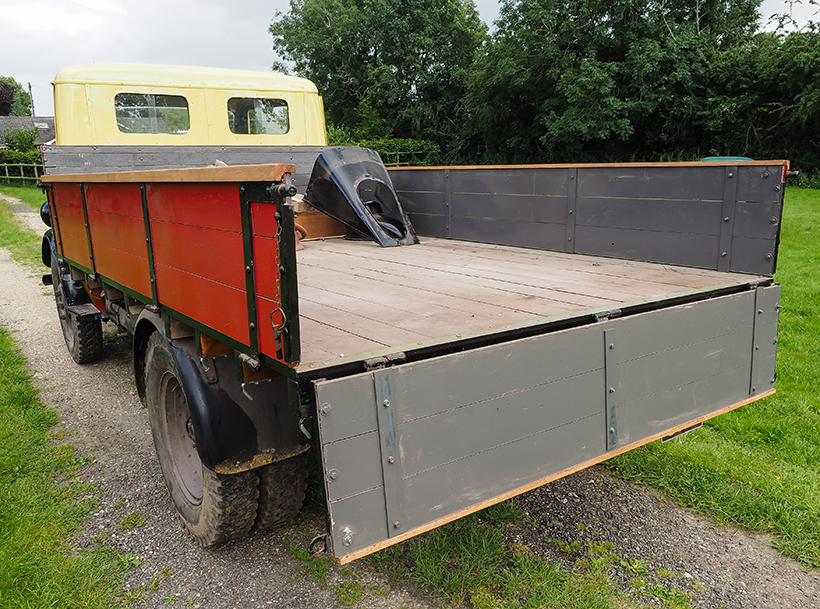
GER 972 was for some at least of its working life a tipper. It was, though, acquired with an over-length flat body that has been cut back to its correct length and fitted with dropsides.
Two aspects of the cab did, however, cause a few problems. One was the frame for the opening windscreen which was originally formed from a thin and fairly complex steel pressing. The bottom of this was rotten, but rather than trying to replicate it, Nigel made and machined a new section from solid steel. The screen itself is flat, and Nigel was able to cut a replacement from flat laminated glass. Or, if we are to be 100% factually accurate, he was able to cut three new screens, as fitting the screen into the frame proved rather tricky, and two screens broke during attempted installation…
The other slight issue concerned the sliding sunroof. This is, of course, a very unusual feature on a lorry cab and one which the brothers were therefore keen to have working if at all possible. New runners were needed, and made up by a local fabricator using the originals as patterns, and now the roof is once again fully-working.
As already noted, the lorry came with a newly-made, but over-length, flat body. This was cut back to the correct size, and Nigel then made up a set of dropsides and appropriate hinge gear. Little was needed in the way of mechanical work, though a new set of tyres was donated by “a friend whom we’ve helped in the past and was keen to return the favour.” As built, the 7V had 6V electrics, but it came with a 12V dynamo in the pile of bits.
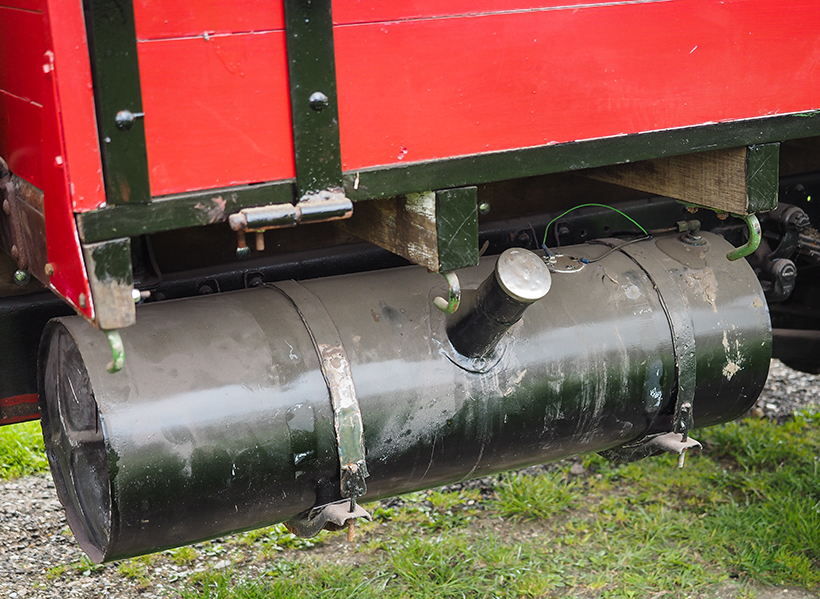
Nigel therefore completed the upgrade by fitting this, changing the regulator, fusebox and bulbs, and making a few localised repairs to the (very simple) wiring loom; apparently the starter motor is fine on 12V. A new headlight/sidelight switch was also needed, but as this is essentially the same as on a Ford Model A car, a local specialist was able to supply. A new speedometer cable was made up by Speedy Cables, and a contact with a couple of military 7Vs was happy to part with one of his spare oil/temperature gauges.
Blood and custard
The lorry has been painted in British Railways ‘Blood and Custard’ livery to replicate a British Railways local delivery or maintenance lorry of the 1950s. Part of the inspiration for this came from the GER (Great Eastern Railway) registration. It was also intended that, as a thank you for their help given in the restoration, the Mid-Suffolk Railway could display the lorry, and completing it in a railway livery therefore seemed appropriate. The other reason was that Neil and Nigel both like railways, and with this lorry’s early history a total mystery, there wasn’t really any overriding reason not to.

The project took just under a year to complete, though at the time of writing a couple of finishing touches are still needed. In particular, the original internal doorhandles were missing when the lorry arrived, and so far have proved somewhat elusive; can anyone help? Like all the Davis Brothers projects, this one is no concours contender; that was never the aim. Rather, the intention was to replicate the look of a working lorry, and that is precisely what’s been achieved.
Driving the 7V is, shall we say, ‘interesting.’ For starters, with an on-paper top speed of around 28mph and a three-speed non-synchromesh gearbox, it’s never going to get anywhere quickly or tolerate any attempts at rushing it. The rod-and-cable brakes were also, shall we say, designed with that level of performance in mind. And finally, given that this is a 1940s Ford, it’s no real surprise to learn that the windscreen wiper (singular..) is vacuum operated, meaning speed of operation is directly proportionate to the vacuum within the inlet manifold, slowing right down when going uphill and speeding up on downhill inclines.
But that’s how it was back then – commercial vehicles were limited to 30mph (or even 20mph) anyway, and driver comfort and convenience were never really a consideration when it came to design or manufacture. All too often, nostalgia for the good old days tends to be rose-coloured.
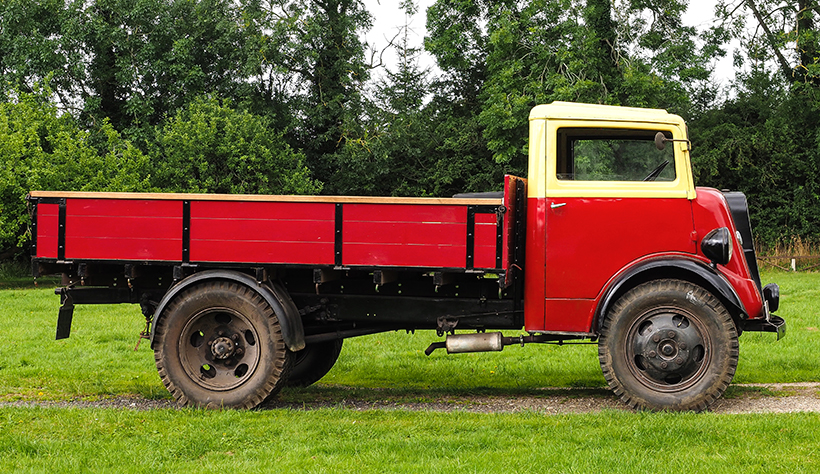
As for GER 972, well it’s likely that it will be out and about at a few events in East Anglia this year, no doubt including the Eastern Counties Vintage at Norwich Showground in October. Other than that, the 7V will be viewable at the Mid-Suffolk Light Railway’s Wetheringsett site (near Stowmarket, postcode IP14 5PW) on normal operating days. To find out more go to www.mslr.org.uk
This article is taken from the current issue of Classic & Vintage Commercials magazine. For a money-saving subscription simply click HERE




